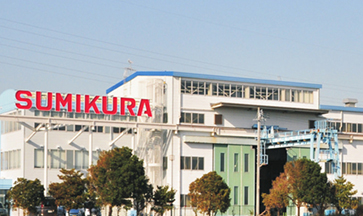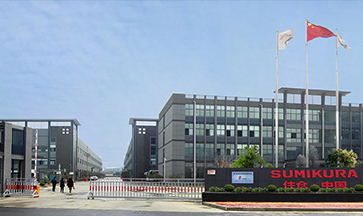In the sheet metal fabrication and stamping industry, a blanking line serves as the crucial bridge between raw coil or sheet stock and downstream forming, assembly, or further processing. Selecting the right blanking line can maximize throughput and yield while directly affecting part quality, total cost of ownership, and long-term competitiveness. Below are ten essential factors industrial buyers should evaluate when procuring or upgrading a blanking line, along with emerging trends to watch.
For high-volume, continuous runs, choose a line capable of high cycle rates and durable performance under heavy-duty conditions. In contrast, if your production is low-volume, mixed-model, or requires frequent changeovers, a flexible system with rapid changeover (quick tool change) or even laser blanking capability is more suitable.
Simple rectangular or trapezoidal blanks are well served by cut-to-length shears or conventional blanking presses. For intricate contours, sloped edges, or 3D features, press blanking, laser blanking, or hybrid systems are more advantageous.
High-strength steels, alloys, and stainless steels demand a heavier-duty structure, more robust tooling, and refined control systems for repeatability. Softer materials (e.g., aluminum or low-carbon steel) place fewer mechanical demands on the machine.
A line must accommodate both the maximum and minimum thickness you intend to blank. Variations in thickness across coils (material tolerance) can degrade edge quality or accelerate tooling wear if not properly managed.
Best for straight-edge, regular blanks like rectangles. Offers good economy and high speed for simple shapes.
Ideal for moderately complex parts, offering strong repeatability and excellent edge quality. Servo-driven blanking presses are increasingly common for shaped blanks.
Provides maximum flexibility for complex contours and rapid prototyping without tooling changes. High-speed laser blanking is becoming a viable option for dynamically shaped blanks.
Some vendors offer combination lines (e.g., shear + press or press + laser) to provide flexibility across part families.
Clearance is critical: too large, and you risk burrs, rough fracture edges, and dimensional inaccuracies; too small, and tooling wear increases dramatically. A common guideline is 5–10% of sheet thickness, though the optimal clearance depends on the material and desired edge finish.
If customers require tight tolerances or a high surface finish, higher-end tooling, precise alignment, advanced feedback controls, and rigorous maintenance are necessary.
A stable, flat feed line is essential. Any coil curvature, residual stress, or misalignment can cause downstream defects.
Straightening (leveling) systems must manage coil curvature and residual stresses to maintain blank consistency.
Efficient part stacking and scrap removal reduce downtime and manual handling. Sophisticated dual-stack or buffer systems help maintain cycle continuity.
Choose a press rated for the maximum load required by your thickest or hardest material, plus a safety margin.
Consider stroke length, dwell time, slide velocity, and the ability to maintain high strokes per minute (SPM). Modern fine blanking presses can achieve SPM comparable to conventional stamping for certain thickness ranges.
Essential for multi-product operations to minimize downtime.
A well-designed human-machine interface (HMI), diagnostic features, automated alerts, and remote monitoring capabilities improve uptime and enable predictive maintenance.
Select tooling materials (e.g., tool steel or coated steels) with high wear and fatigue resistance. Ensure ancillary components—such as guides, bearings, and feed mechanisms—are designed for your operating environment.
Consider not just the machine price but also installation, commissioning, tooling, training, spare parts, and maintenance.
Lower scrap rates directly reduce per-part costs. A blanking line that minimizes waste can justify a higher initial investment.
The drive type (servo, hydraulic, or electric) and auxiliary systems affect energy use. More efficient systems reduce long-term costs.
In some applications, simpler methods such as slitting or shearing may be more cost-effective, especially for straightforward blank shapes.
Evaluate vendor track records, case studies, reliability data, and customer references.
Confirm that the supplier provides turnkey services, including installation, commissioning, operator training, and ongoing support.
Ensure that spare parts, control system updates, and remote diagnostic services are readily available.
Lines that allow future upgrades (e.g., laser modules or IoT monitoring) extend service life and protect your investment.
Real-time monitoring, process data feedback, predictive maintenance, and smart control are becoming standard expectations.
Demand for blanking in high-strength steels—particularly for electric vehicle components—is accelerating, driving significant growth in the fine blanking tools market.
For example, Feintool has recently divested its fine blanking machine business to focus on component production, signaling evolving business models in the sector.
Tighter energy, emissions, and recycling requirements are pushing buyers toward low-waste, energy-efficient technologies.

Your cutting line specialists!
 Factory in Japan
Factory in Japan
ADDRESS
487-3, Sanshincho, Chuoku, Hamamatsu, Shizuoka, Japan
 Japan local market : +81 53-425-5331
Japan local market : +81 53-425-5331
 Factory in China
Factory in China
ADDRESS
265 Yixian Road, Deqing, Zhejiang, China
 Overseas market : +86 572-883-2016
Overseas market : +86 572-883-2016